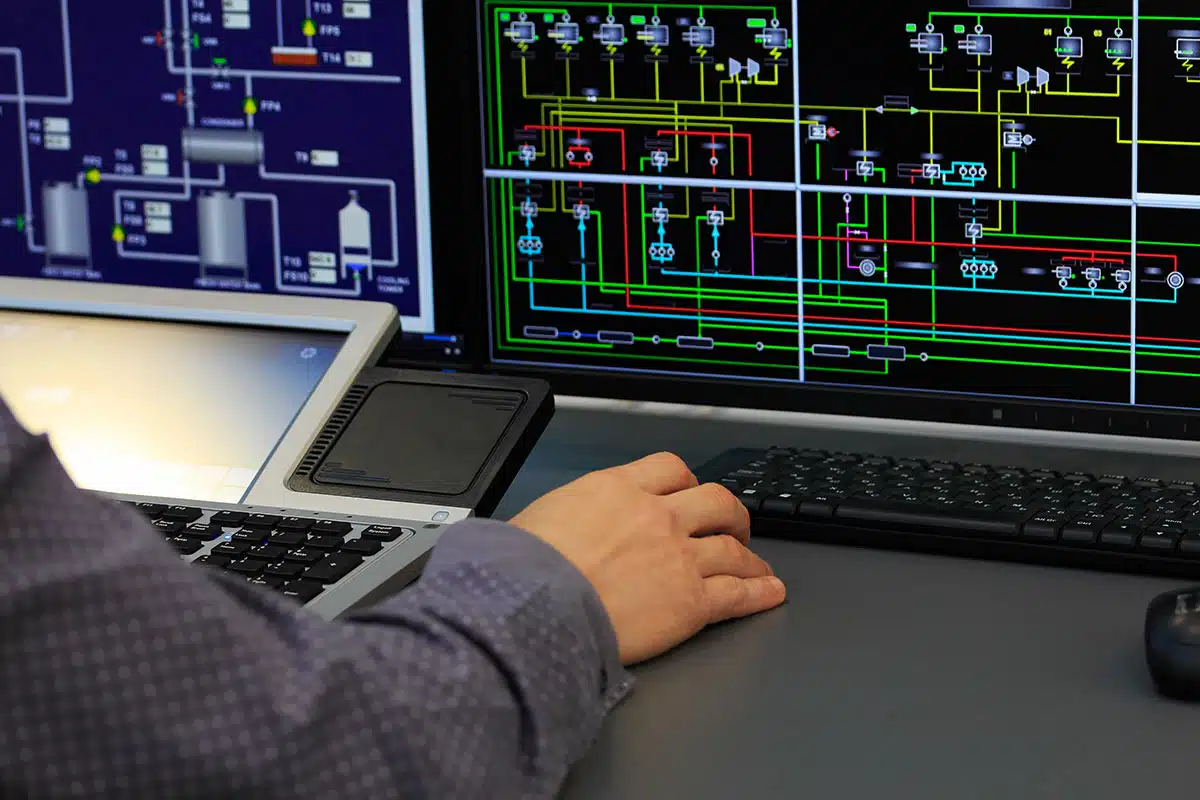There’s obtaining an investment, and then there’s maintaining one. Sounds straightforward. But if that investment asset is a commercial property, maintaining it means a lot more than just holding on to it. Active commercial property maintenance is a critical necessity for upholding property value, ensuring long-term business success, and maximizing returns. And it’s not just about resale value. By enhancing comfort and aesthetic appeal, a well-maintained property also provides tenant satisfaction, attracting new occupants and retaining existing ones.
So how can managers and owners maximize their commercial property maintenance for long-term success? Specifically, which protocols, policies, and technologies will enable you to uphold the value and viability of your buildings? Below are some strategies that will enable you to maintain your commercial investment and build your business brand.
Optimizing Commercial Property Maintenance with Regular Checkups
Identifying problems early can prevent disruptions to business operations, mitigate expensive damage, and even prevent a hazard that could be litigable or life-threatening.
Commercial property maintenance is kind of like dental hygiene: They both require regular checkups to ensure everything is in working order. One of the fundamental steps in optimizing property maintenance is conducting thorough inspections at regular intervals. Similar to dental hygiene, a proactive approach to maintenance helps to spot issues early, avoiding costly repairs in the future.
Identifying problems early can prevent disruptions to business operations, mitigate expensive damage, and even prevent a hazard that could be litigable or life-threatening. And to maximize facility and building inspections, consistency is imperative. Facility type and risk factors such as hazardous materials or complex machinery will determine the frequency of maintenance inspections. For manufacturing facilities and warehouses, a thorough inspection at least once a month is prudent. Spaces with fewer potential hazards, such as retail stores and office buildings, typically only need to be inspected once a quarter.
And whenever you conduct an inspection, don’t forget the checklist. While many facilities managers have so much experience that they simply “know” what to look for every month, a checklist facilitates important recordkeeping, ensures that less experienced personnel don’t overlook a critical component, and makes it easier to comply with safety regulations.
Establishing a comprehensive inspection checklist that covers all your facility’s vital components will ensure that no system or structure is overlooked and that your facility continues to run smoothly. Checklist apps can be an excellent option, or you can develop a customized, in-house version. Even an old-fashioned, printed checklist can work well—as long as it’s carried with inspectors and utilized every time.
A checklist will help ensure that maintenance personnel regularly inspect every section of the facility, including essential components such as HVAC systems, plumbing, electrical systems, and elevators. These regular inspections should also include the building envelope, i.e., the roof, exterior and interior walls, ceilings, windows, stairs, etc. And of course, be sure to check safety equipment in accordance with fire department and other regulations.
Making Plans and Keeping Records
Checklists for inspections are just one tool for optimizing commercial property maintenance. A comprehensive facilities master plan and detailed maintenance records are also essential tools to have in your management toolbox.
A facilities master plan (FMP) outlines a strategic and long-term approach for managing and maintaining your property and is a vital part of planning capital improvements and strategizing maintenance practices. When developing an FMP, keep your facility’s long-term development and growth in mind, and be sure to include goals that cover upgrades and improvements. If compliance with the Americans with Disabilities Act (ADA) is a goal, for example, your target improvements may include adding ramps and widening doorways.
In fact, when it comes to optimizing maintenance, developing and utilizing an FMP is a great way to shift from a reactive, emergency-based form of maintenance to an efficient, deliberate approach that will improve tenant satisfaction, increase operational efficiency, and even enhance property values. Having a master plan—one that is reviewed regularly and kept current—enables property owners and managers to allocate resources effectively, ensuring that maintenance efforts are appropriately funded and prioritized.
Where FMPs look to future actions and goals, maintenance records compile historical data of completed tasks or in-progress activities. In addition to repair logging, well-organized maintenance records include all vendor information and warranties, inspections, and upgrades performed on the building systems and envelope. This solid recordkeeping will prove invaluable when developing your FMP and is one reason why optimizing facilities operations should start with implementing easy-to-use recordkeeping systems.
To maximize efficiency, recordkeeping should be centralized, easily accessible, and kept in a consistent format. Information supplied by in-house technicians or service providers needs to be thorough. It’s all too easy to rush when completing forms, especially when technicians have a long list of priority projects. But ensuring that records are clear and informative will make them much more useful for the next person who has to rely on that information, and in the long run, this will save time and money.
More Than Aesthetic Appeal
Your property’s appearance is a reflection of your business, and has a direct impact on your tenants, visitors, and customers. Allocating funds from your facility service budget for maintenance that enhances your facility’s aesthetic appeal will be sure to pay dividends, since pleasing aesthetics often require preventative maintenance measures.
Sustainable grounds and landscaping are certainly important in establishing your facility’s aesthetics. But optimizing your commercial property maintenance goes further than caring for shrubs and flowers. (Even though that’s important!) Keeping things clean and aesthetically appealing in spaces beyond the landscape or building curb is essential for upholding your asset value and business profile.
Building exteriors are one example. Outdoor-facing walls and facades can accumulate grime and dirt that hide cracks and cover areas that need attention; algae and mold trap moisture that, if left untreated, can lead to more serious problems. Periodic pressure washing of exterior walls and walkways will mitigate dirt and algae build-up, protecting walls and making paths safer—and more appealing!
Another issue to look out for is faded or broken signage, and parking lot markings that have worn away. When you see these elements every day, it’s easy to overlook their condition, but customers and visitors will likely see faded and worn exterior elements as a sign of neglect. Taking care of these details lets customers know you care.

Likewise, grimy trash areas send a negative signal and, what’s more, will encourage pests. Pest infestations have a particularly negative effect on a company’s reputation and can drive away tenants. Regular inspection of trash areas and timely pest treatments, when needed, will help maintain a clean and hygienic environment. And don’t forget interior common areas. Well-kept lobbies, hallways, restrooms, and break rooms are vital to making a positive impression on tenants and visitors.
Whatever your industry, the state of your facilities has the power to impact—for good or bad—your company’s reputation in the marketplace. Regular cleaning and maintenance of both interiors and landscapes, along with the prompt repair and refurbishment of visible areas, will go a long way to maintaining your facility’s property value and your company’s positive reputation.
Maintenance to Boost Energy Efficiency
When it comes to your facility’s energy use and consumption, regular maintenance and careful management can significantly improve energy efficiency. Tenants appreciate energy-efficient and sustainable properties, and businesses that incorporate energy management into their building maintenance protocols can reduce operational costs.
Using occupancy data to strategically set HVAC schedules is an excellent way to maximize energy efficiency. As an alternative to traditional controls, which assume that buildings are fully occupied, an occupant-centric control is based on actual building occupancy levels and will allow you to reduce energy consumption without sacrificing tenant comfort.
For example, reducing HVAC set points for winter nights, and then raising these setpoints for cooling on summer nights, can generate significant savings in energy, as the HVAC equipment is essentially turned off except when extreme temperatures are reached. Strategies like this—using occupant-centric control together with improved sequences—have been shown to reduce annual energy consumption by 30%.
These types of adjustments are possible even with relatively unsophisticated building automation systems (BAS). But some automated tools enable even more granular control of a building’s energy use. Known as energy management systems (EMS), these tools can greatly enhance your current BAS.
Although a building’s BAS can be considered an energy-saving system, it focuses primarily on controlling and monitoring various building systems. It does not provide data on consumption. An EMS, however, makes it possible to determine how much energy is being consumed and where. It gathers valuable statistics that can inform BAS programming. By utilizing the building’s BAS in conjunction with an EMS, facility managers have access to detailed data and analysis that can identify areas of inefficiency, allowing the BAS to be configured to optimize energy use.
Effective Communication and Response

While BAS and EMS systems (and checklists and master plans) are all important, perhaps the most effective means of optimizing commercial property maintenance lies with the building occupants themselves. Promoting an open line of communication with tenants in order to promptly address their concerns and maintenance requests is vital for tenant confidence and comfort. By making it easy for tenants to report the maintenance issues that matter to them, from the burnt-out light in the lobby to the pothole in the parking lot, you let them know that you’re paying attention to their needs.
Making it easy for tenants to convey questions or concerns gives them a say in their environment and contributes to a harmonious owner-tenant relationship. And it’s not hard to do. Online portals and mobile apps are a great way to enable occupants to report issues and track the progress of their resolution. These platforms can also be used to inform occupants about upcoming repairs that may cause disruptions or the roll-out of new security protocols.
Whatever communication method you choose, being responsive and informative when dealing with tenants demonstrates your commitment to their satisfaction and will go a long way to reassuring occupants and visitors alike that you have their safety and comfort in mind.
Practice Makes Perfect
Optimizing commercial property maintenance is an ongoing process that requires dedication and a proactive approach. By conducting regular inspections, implementing smart planning, and prioritizing tenant needs, building managers can attract and retain tenants, and business owners can raise their company’s profile. A well-maintained property not only serves as a testament to your commitment to quality, it also lays the foundation for future growth.
